#cosmo rotary turbo
Explore tagged Tumblr posts
Text



1983 Mazda Cosmo Rotary Turbo
My tumblr-blogs:
www.tumblr.com/germancarssince1946 & www.tumblr.com/frenchcarssince1946 & www.tumblr.com/englishcarssince1946 & www.tumblr.com/italiancarssince1946 & www.tumblr.com/japanesecarssince1947 & www.tumblr.com/uscarssince1935
6 notes
·
View notes
Text
cars of retribution; michizou tachihara's 1991 mazda rx7 fc3c
HELLO RETRIBUTION FANS
IT IS I
THE BETA
I want to yap about the cars so much with the whys and the hows each character gets to them so I decided to start posting about the interesting ones one by one where I go into a lot more detail than the chapter overview ones AND YES I ALREADY DID ONE FOR CHUUYA but it's old and stinky I neeed to redo that one

Tachihara's RX7 FC3C (pictured is a 3S; the Coupe version. Tachihara's even more insane and picked up the cloth-topped convertible one) is basically... a race car. that happens to have a license plate.
The mod used in these pictures is the RE Amemiya Furinkazan mod which came in the Shutoko Revival Project car pack. Expect to see cars from there since a lot of the cars there follow the rough aesthetic I had in mind for retribution.

The car, pictured, has an RE Amemiya bodykit for the FC, and the rims are Enkei NT03's. The only real difference is that the car is a convertible, but I think he'd do an aftermarket conversion to make it a Targa top to make it look a little more savory to the eye (go look up how an FC convertible looks like......).
The engine in the car is a Mazda 20B engine block, which is different from the 20B-REW used in the Eunos Cosmos through intake placement or something like that... It's the 20B in specific because it was sourced from a former Group C Le Mans race car; the Mazda 757 (although there it's named the 13G).
I should mention that the rotary engine is different from your run-of-the-mill piston engine in many ways, also.

Rotaries are a triangle instead of a piston compressing a chamber, which means that the engine is a closer relative to a dirt bike engine rather than a normal car's engine. Power's high up the revs, and there's not a lot of bite when you first get it off the line compared to a similar conventional engine.
Anyhow, as Tachihara worked from just the engine block, a lot of the other parts are custom and unorthodox, to say the least. For one, the car's twincharged in that it uses forced induction from a supercharger and a turbo. Both modes had their advantages and disadvantages, though twincharging at that point is just a flex and pretty impractical despite the theoretical benefits.
Second also is the fact that the car is hell to drive. The fact that the engine is a race engine and the whole experience is built around race car sensibilities makes the car be infeasible to drive on the daily. The car lurches and jerks forward from a stop light, stalls at the drop of a hat, very low and stiff so you feel every pothole, hot and loud as hell... and I don't need many other adjectives for you to get the point.
However, when the car goes... it goes. It has way more power than you know what to do with in a mountain pass. And when you drive it, it wants you to go faster, like it's egging you to go rev higher, go for the power band and feel the car just overtake you from how fast it's going under your nose.
It's totally on-brand for him.

All in all, the car makes around 550~ horsepower to the wheel. Which, when you consider that the car is a death trap and wants to kill you... is a lot.
Now Tachihara got the car from his time working as one of the few full-time employees in Black Lizard Works. In retribution's verse, it's practically one of the most renowned tuner houses; Human Error and Arahabaki got their cars tuned there, as well as Akutagawa's and Gin's cars, naturally. You'd need a pretty penny to get a car built from the ground up there, but through the hefty fees, it's guaranteed that the cars are worldbeaters behind the right hands.
Black Lizard numbers the chassis of certain cars that they work on, and Tachihara's is #017. For reference, Human Error and Arahabaki's are #005 and #006. It also has a Black Lizard Works badge on the back, which is practically a mark of honor from the tuning house when they know it's good enough that people start asking whose car it was.

The car and engine started off as two different things. Tachihara bought a very ran-through example of an FC, one where the engine's starting to give up the ghost and is not worth it to salvage. It is also Tachihara's First Car. And the reason why it's absolute hell to drive is because Tachi keeps tacking on mod, after mod, after mod, with no regard as to how it's gonna effect everything cohesively. It's always a coin toss whether it's gonna crank up to life, or throw up a problem so obscure it requires scouring factory documentation on how to even begin solving it.
It's practically the monster that embodies many of the sensibilities of the generation of racers he's a part of... which is kind of poetic in that sense, but who am I kidding, Tachihara's just immature.......
If you'd like to know more or nerd out about the car please comment down and I'll be sure to fill in the details on what I have about his car!!! Maybe next I'll do Tanizaki or Gin's since those cars are also death traps
3 notes
·
View notes
Text




Mazda Cosmo Rotary Turbo Coupé, 1982. The HB series Cosmo Turbo was Japan's fastest car until it was overtaken by the R30 Skyline RS. It shared the turbo-charged version of the 12A Rotary engine with the first generation RX-7
#Mazda#Mazda Cosmo#Mazda Cosmo Rotary Turbo Coupé#1982#rotary engine#Mazda rotary#turbocharged#concealed headlamps#1980s
286 notes
·
View notes
Text
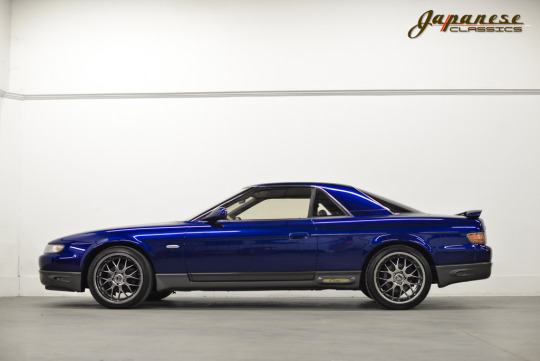
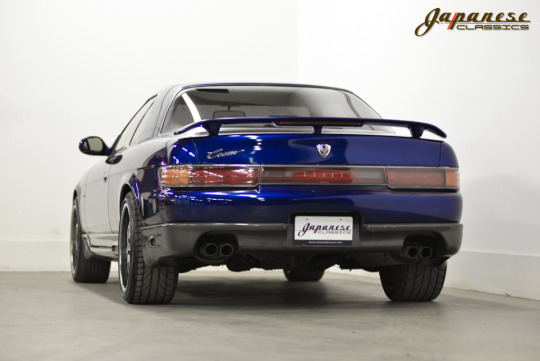
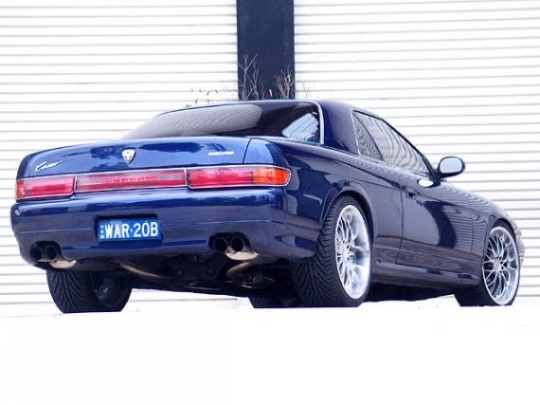
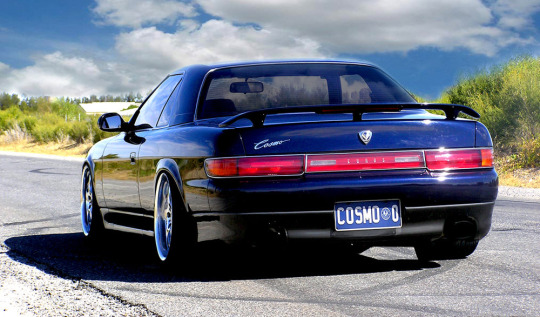
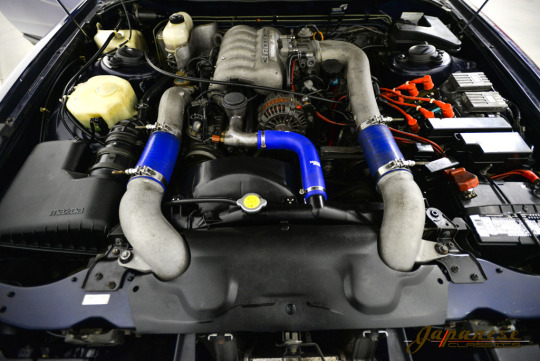
Mazda Cosmo 20B / 3Rotors
#autos#jdmcars#jdm#jdmlegends#jdmdaily#ultra rare#super rare#rare#mazda cosmo#cosmo#20b#rotary engine#rotary#3Rotors#turbocars#turbocharger#turbo
50 notes
·
View notes
Photo

eat fresh
104 notes
·
View notes
Photo



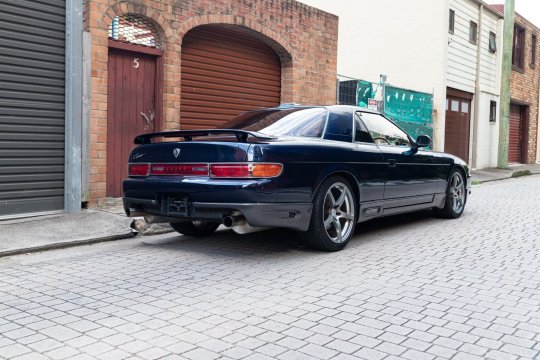

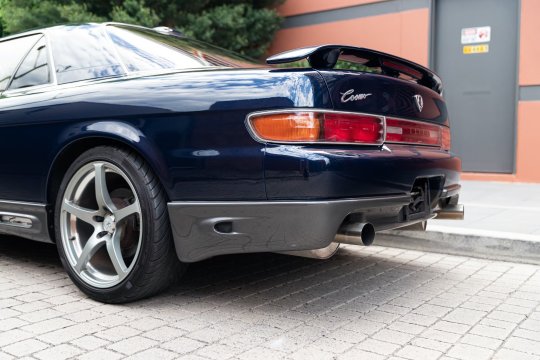

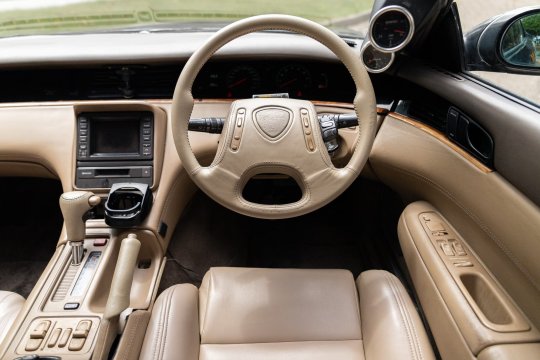

Mazda Eunos Cosmo JC
The so-called JC series of the Cosmo began to be manufactured in 1990 under Mazda's Eunos brand and its design was based in certain aspects on the MX-03 concept of 1985. Aesthetically it was elegant, but it did not stop offering good performance. And it is that its engine was one of the most striking factors of this generation. Under the hood could mount a 13B-RE twin turbo engine, although the most acclaimed was the 20B, a three-rotor Wankel rotary engine. It came to offer 300 CV in its supercharged variant, which allowed it to reach 255 km/h without limitations, since it could only reach 180 km/h as standard due to the country's regulations. Of course, all versions of the car were offered with a 4-speed automatic transmission, so it was not possible to opt for one with a manual gearbox that would provide greater driving fun. The engine was not the only interesting aspect of the Mazda Cosmo. Technologically it was also very advanced. In fact, so much so that it is the first mass production car to incorporate a GPS navigation system, an element that only a limited number of vehicles offered until a few years ago. In addition to this, this coupé included a touch screen through which elements such as GPS, telephone, radio or air conditioning could be controlled. Such amount of technology in the first half of the 90s was not common, which made the car not exactly cheap. This affected its sales and 8,875 units were sold in Japan.
27 notes
·
View notes
Photo



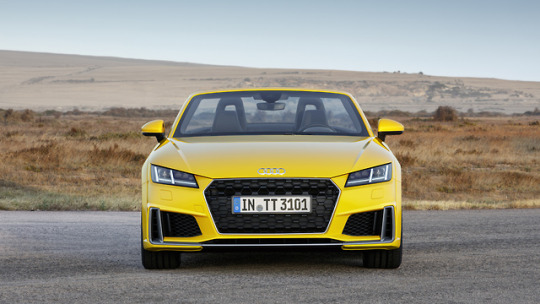
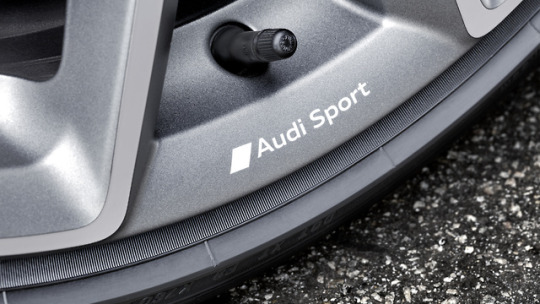
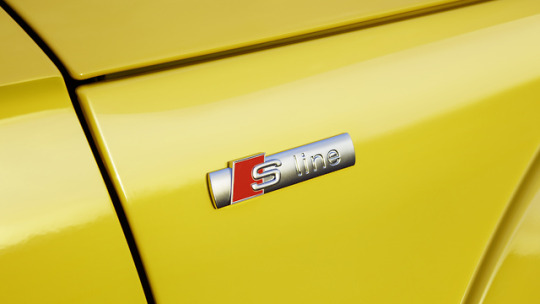
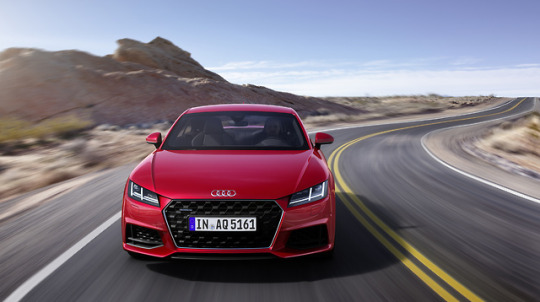

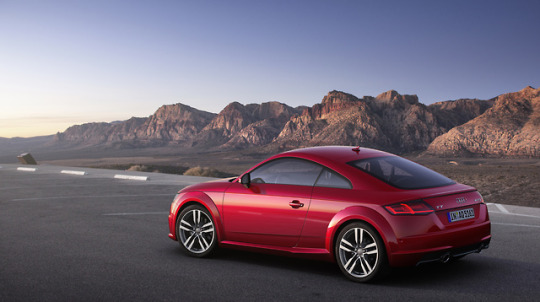
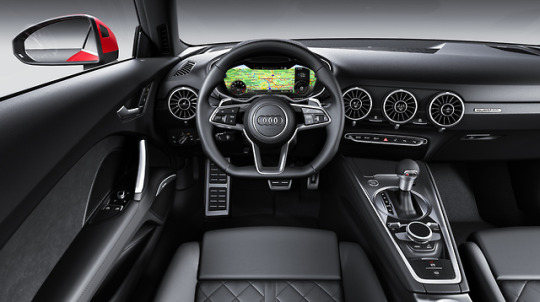
First Look: The New Audi TT – An Update for the Design Icon
Twenty years after the series premiere of the original TT, the third generation of the Audi TT is receiving a comprehensive update. The design icon takes the stage with a sporty and refined exterior design, higher-powered engines and an extended scope of standard equipment.
The Audi TT stands for driving pleasure, design and close attention to detail: aluminum elements in the driver-oriented interior, progressive rim design, a short, ball-shaped gear lever knob, characteristic tank flap and round, dual-branch tailpipes are among the typical features of this compact sports car. The design with its incisive geometric forms has fans all over the world.
Refined, enhanced, extended Right on time for the 20th anniversary of the first Audi TT, the brand is especially highlighting the sports car character of the new model. Audi has accordingly refined the design of the new TT, enhanced its performance and extended the range of standard equipment. Besides the driver-oriented Audi virtual cockpit, the basic version of the new model now features the Audi drive select dynamic handling system, a rain and light sensor, heated exterior mirrors and the multifunction steering wheel plus, with which the infotainment and voice control system can be controlled entirely using the steering wheel. Also standard are the illuminated USB ports as well as Bluetooth for wireless pairing of devices.
Sporty and expressive: the exterior design More masculine, more progressive and even sportier than before – the exterior design of the new TT. The front features a three-dimensional Single frame radiator grille. Large side air inlets emphasize width even in the basic version.
At the rear, horizontal lines again underscore the width of the new Audi TT. There is no cap underneath the tank flap with its classic TT design; the driver can insert the gas pump nozzle directly into the opening – a typical sports car feature. Headlights with LED or Matrix LED technology are optionally available. The dynamic turn signals are a visual highlight here.
The new designed, optional S line exterior package underscores the sporty character of the Audi TT even more. It includes a full-length front splitter, vertical air inlets, a radiator grille in titanium black and specific side sills with inserts as well as a sporty rear end. Added is a wider diffuser and vertical air inlets below the rear lights with three horizontal fins each.
The TT Coupé and the TT Roadster are each 4.19 meters (13.7 ft) in length. Both body variants have short overhangs; their wheelbase measures 2.51 meters (8.2 ft). The new TT leaves the factory on 17-inch wheels; Audi and Audi Sport optionally offer 18, 19 and 20-inch wheels. Three new colors complete the range of paint finishes: cosmos blue, pulse orange and turbo blue (S line only).
High-powered: the engines For the new TT, Audi has a range of petrol engines in various performance levels, paired either with the six-speed manual transmission or a seven-speed dual-clutch transmission. In both transmission variants, the close-ratio lower gears enable powerful acceleration, while the wide ratio of each transmission’s highest gear keeps the engine speed down. All new engines come with a gasoline particulate filter.
Effortlessly sporty: suspension and quattro drive The new Audi TT offers handling that is both dynamic and precise. If the customer chooses the S line sport package or Audi magnetic ride, the body is lowered by ten millimeters (0.4 in). Other chassis highlights include progressive steering, four-link rear suspension and Electronic Stabilization Control (ESC). The wheel-selective torque controlis activated in fast cornering and improves handling as required by means of precise brake interventions on the unloaded wheels on the inside of a curve.
Driver-oriented: the cockpit and the assistance systems The sports car character is also underscored by the driver-oriented interior with its clear lines. The slender instrument panel resembles an aircraft wing; the round air vents with integrated controls allude to jet engines – a classic TT detail.
Sport seats with integrated head restraints are standard on the Audi TT. S sport seats (standard in the S line sport package) with pneumatically adjustable side bolsters are optionally available. The luggage compartment of the 2+2 seater affords 305 liters of space (10.8 cu ft) underneath the stretched tailgate, while the Roadster offers 280 liters (9.9 cu ft).
All indicators appear in digital form on the 12.3-inch display of the Audi virtual cockpit. The driver can choose between two modes: in the classic view, the speedometer and tachometer take center stage. In “Infotainment” mode, content such as the navigation map is enlarged. The new sport display is optionally available and provides information on the engine output currently in use, as well as the torque and g-forces.
The MMI terminal on the center console has just six keys. The top-of-the-line MMI navigation plus with MMI touch integrates a touchpad on the upper surface of the rotary/push-button control that recognizes handwritten input and allows zooming, for example. The voice control system understands formulations from everyday speech.
Audi connect brings various online services on-board via fast LTE. The Audi smartphone interface connects smartphones with the car and can stream content seamlessly to the Audi virtual cockpit via USB. The high-end solution when it comes to hi-fi systems is the Bang & Olufsen Sound System. Its amplifier offers 680 watts of performance and a total of 14 channels. It fills the interior using twelve speakers, including two center speakers and two bass boxes.
The driver assistance systems embody the TT philosophy: they relieve the driver of work, so that he or she can fully concentrate on the road. The line-up extends from the lane change assist Audi side assist, the lane departure warning system Audi active lane assist and traffic sign recognition to the park assist with display of the surroundings and a rearview camera.
Classic: TT Roadster with soft top Like every open-top Audi, the new TT Roadster comes with a soft top in either black or gray. The soft top has a taut fit, and its excellent sound insulation makes it an “acoustic top.” With a weight of 39 kilograms (86.0 lb), the top is very light and doesn’t compromise the luggage compartment. A standard feature, the electrical drive opens and closes the top in around ten seconds at vehicle speeds of up to 50 km/h (31.1 mph).
The new Audi TT will arrive at German dealers and become available in other European countries in the fourth quarter of 2018 – customers can already pre-order the model from late September. Prices for the TT Coupé start at around 35,000 euros. The TT Roadster is available from around 37,500 euros.
57 notes
·
View notes
Photo

eBay: Mazda Cosmo 1991 rx7 rotary 2.6 turbo http://rssdata.net/Qlmd7k
1 note
·
View note
Text
They saw potential for that engine in their cars
In a world of new possibilities A young Felix Wenkel was said to have a dream. A dream about an engine that was built for speed and performance. Though the engine was not actually developed for another forty years the young boy was right, a new style of gas engine could indeed be made. Little did he know how far this would go and how his life would be built around this engine. Little did a company called Mazda know that what would set them apart is a young German boy and his dream of a rotary engine. In 1924, a 22 year old Felix Wenkel went on to partner with a German aviation ministry, and began to create the rotary engine he had been dreaming of years before. In 1957 a prominent Motor cycle manufacturer was interested in the engine. They partnered with wankel and used some of his theories to create the DKM rotary engine. With this engine the motorcycle company was able to break speed records. This of portable blender Wholesale course proved that the rotary engine could be more than just a dream.Mazda indeed took notice of this engine.
They saw potential for that engine in their cars. They set to work and immediately ran into a problem with chatter marks. Chatter marks meant the apex seal was vibrating causing a nicking effect. The company setup a department solely devoted to addressing this problem. In 1967 the company released the first dual rotor rotary engine in a car the cosmo sport. Mass production of this car went well. The company began creating other models and looking to export to the United States.
The muskie act for clean air emissions had just gone under way. Other car manufacturers claimed it was impossible to meet the standard. The company managed to meet standards and exports began.The company continued to improve performance and pressed on creating new versions of the engine. They also created the phoenix project. An effort to improve fuel efficiency became a primary focus. Multi rotor rotary engines were developed. These engines could outperform a V8, but they had some technical problems. The company added a twin turbo system and found success. At lower speeds only one charger operated, at higher speeds both operated allowing for a more powerful and efficient car.In the car world, a world where other manufacturers were fighting for the same customers, Mazda came out as a strong competitor. The company has kept a close eye on consumer demands and continues to provide innovative technology. They keep improving fuel efficiency and making a powerful car. They even remained in the world of piston engines, a wise move on their part.
0 notes
Text
These Are The Most Iconic Mazda Models Ever Made | HotCars
New Post has been published on https://coolcarsnews.com/these-are-the-most-iconic-mazda-models-ever-made-hotcars/
These Are The Most Iconic Mazda Models Ever Made | HotCars

101 in years past, in the Hiroshima Prefecture within Japan, a new automaker came about. The Mazda Motor Company was founded by Jujiro Matsuda, and the company, like a great deal of other automakers, tackled another niche before they dropped their toes in the automotive aftermarket; they used to make corks.
Nowadays, Mazda is a huge global automaker, which includes seriously impressive sports car models over the years, and particularly nowadays as they prepare in order to enter the premium segment, let alone their great efforts to help keep the internal combustion engine in existence and going. Over the past one hundred year, they have constructed some truly iconic vehicles.
nine Cosmo 110S

favcars. possuindo
Also referred to as the Cosmo Sports, the initial car was launched in 1965, and it was the halo vehicle in Mazda's lineup. Even though it was called a Mazda everywhere else in the world, it had been sold under the brand's luxurious alias, Eunos, in their homeland of Japan.

favcars. com
ASSOCIATED: Here's How Much A Series one Mazda Cosmo Is Worth Nowadays
The most notable thing about the Cosmo, obviously, is that it was the 1st production Mazda model to utilize the Wankel rotary motor, something that would become a basic piece of a lot of future Mazda models. In the Cosmo, it had been a 1 . 0 liter device with two rotors plus either 110 or 145 hp, as well as the glorious humming howl associated with rotary motors.
8 RX-7 (FD)

favcars. com
Mazda continued to develop rotary-powered sports cars through the 20th century, and nicely into the 21st as well. Probably their most well-known rotary sports car effort was the FD generation RX-7, sold through 1992 to 2002.

favcars. com
As well as searching and driving like a dream, the particular FD RX-7 improved around the rotary formula. It utilized a 1 . 3-liter device, known as the 13B-REW. The motor produced anywhere from 236 horsepower to 261 hp, and may be paired to an automated, or more fittingly, a guide transmission. It also had the particular novel sequential twin-turbo program, and despite the rather devastating reliability record, very well held FD RX-7s are really worth pretty serious money.
7 787B

favcars. possuindo
Even though it may be hard to believe, Mazda used to compete at the 24h of LeMans. Not just having a beefed-up RX-7 or some thing similar, they had their own special Group C prototypes. The particular 767 enjoyed some achievement, but the particular 787B is the most notable one particular.

favcars. com
This was the car that introduced Mazda the victory on the 1991 24h of LeMans. To this day, it remains the only real rotary-powered car ever in order to win the championship. Additionally it is widely agreed to be among the best-sounding cars ever, manufacturing or not, thanks to the custom-built rotary engine, which when called in, could produce nine hundred hp.
6 Mazdaspeed3/Mazda3 MPS

favcars. com
Although Mazda tried to capture some of the elegance with the new 3 Turbocharged, the original Mazdaspeed 3 was obviously a fantastic hot hatchback. Recognized overseas as the Mazda3 MPS, it showed the world that will Mazda hadn't forgotten regarding performance cars, and this vehicle was a serious contender towards the likes of the Golf GTI and the Renault Megane RS.

favcars. possuindo
Additionally, it quenched the thirst meant for hot hatchbacks in the US marketplace, and at the time, there actually weren't any other similar vehicles on the continent. The 2. 3-liter turbo-four under the hood produced 263 hp, sent to front side wheels through a mandatory 6-speed manual, a GKN LSD, Volvo brakes (yes, really), and retuned suspension. The best part is, they are a bargain nowadays.
5 RX-7 (FC)

favcars. com
With the FD being the particular darling of Mazda's sports vehicle family, the FC RX-7 always seems to be in the dark areas. Even though it's not the favorite amongst rotary fans, it was nevertheless a fantastic sports car.

favcars. com
ASSOCIATED: A Detailed Appearance Back At The Mazda RX-7
As a direct result of offered in the 1980s, the FC has a more charming boxy design instead of the curvy FD. Under the hood is a rotary engine, of course , which was accessible with turbocharging for the first time within the FC, although an EM unit was standard. Due to FD's fame, the FC is surprisingly cheap at the used market, if you're ready to take the risks of an utilized rotary.
4 Mazdaspeed6/Mazda6 MPS

favcars. com
As well as the first Mazdaspeed3/Mazda3 MPS, the brand name also offered a souped-up version of the Mazda6 four door. Facing competition from vehicles like the Acura TL Type-S and, to a lesser degree, the VW Jetta GLI, as well as the Ford Mondeo ST220 in Europe, the six MPS was a seriously amazing car.

favcars. com
The same 2 . 3-liter turbocharged four-cylinder was under the cover, with the same 263 hewlett packard, although the 6 ditched small 3's FWD for a complicated AWD system, allowing for a lot more stability and some AWD powerslides if you fiddle with the balance control, although power is generally split evenly between the axle assemblies. This car really is a rocketship, and it's better than the very uncommon V6 model. Not to mention, it offers also become a bargain.
3 Miata/MX-5/Roadster (NA)

netcarshow. com
The MX-5 Miata is the best-selling roadster ever , and it totally changed the car market when it found its way to 1989. The original Mazda Miata, also known as the MX-5 as well as the Roadster elsewhere in the world, was obviously a huge, smashing success, and another of the Internet's favorite vehicles to praise.

netcarshow. com
The main reason for the Miata's success was that it provided everything that made classic Uk sports cars good, using a (huge) added dosage of reliability. It was furthermore affordable, cheap to fix, plus simple. Now in its 4th generation, Mazda hasn't actually changed the formula, and it's really still a fabulous sports car within so many ways.
two Savanna/RX-3/Grand Neamul

netcarshow. possuindo
As the RX sports cars would be the most well-known application of the particular rotary engine, the truth is, Mazda used the novel powertrain upon many of their other vehicles, including compacts. Arguably one of the most well-known one is the Savanna, or the RX-3, or the Fantastic Familia, depending on the market.

netcarshow. com
RELATED: Which Made The Mazda RX3 Special
Launched in 1971 to compete with the Toyota Corolla and Honda Social, the Savanna never really liked as much success as individuals two. It did, nevertheless , enjoy a lot of success in the race track, as a Savanna competition car managed to win the debut race at the 1971 Fuji 500.
one 323/Familia GT-R
In the late 80s and earlier 90s, Group A rallying was a big thing, specifically since the incredible Group N class was canceled a couple of years prior. Quite a few automakers became a member of the party, including Mazda with the otherwise forgettable 323 hatchback.
Homologation rules required Mazda to produce a road-going version from the race car, resulting in the particular 323/Familia GT-R. The one 8 liter 4-cylinder motor produced a huge (for an earlier 90s compact) 210 hewlett packard, paired to a 5-speed guide transmission. Although not many people keep in mind it, it definitely joins the particular ranks as one of the coolest hot hatchbacks actually.
NEXT: We Can't Stop Looking at These Perfectly Modified Mazda Sports Cars
0 notes
Text





1984 Mazda Cosmo Rotary Turbo Coupé & Sedan
My tumblr-blogs:
www.tumblr.com/germancarssince1946 & www.tumblr.com/frenchcarssince1946 & www.tumblr.com/englishcarssince1946 & www.tumblr.com/italiancarssince1946 & www.tumblr.com/japanesecarssince1947 & www.tumblr.com/uscarssince1935
6 notes
·
View notes
Photo

A Cosmo! Something you don't see everyday. Owner: Please Tag . Check out the Ruff Rotor T-Shirt at www.ruffrotor.com! Link in profile. . . . . . #trl_therotarylife #rx7 #mazda #fd3s #efini #mazdarx7 #rotary #brapbrapbrap #13b #13brew #turbo #import #jdm #wankel #turbocharged #jdmgram #jdmnation #cargram #carsofinstagram #carporn #racecar #rotaryengine #7sday #stance #tuner #builtnotbought #boosted #rotarypower #mazdaspeed #ruffrotor (at Valley Stream State Park) https://www.instagram.com/p/B0qnXVul3GF/?igshid=i2t6zmiy7mn9
#trl_therotarylife#rx7#mazda#fd3s#efini#mazdarx7#rotary#brapbrapbrap#13b#13brew#turbo#import#jdm#wankel#turbocharged#jdmgram#jdmnation#cargram#carsofinstagram#carporn#racecar#rotaryengine#7sday#stance#tuner#builtnotbought#boosted#rotarypower#mazdaspeed#ruffrotor
0 notes
Photo

Mazda Milestones - 1981 - Cosmo range. The HB series Cosmo (sold Internationally as the 929) is the only model range ever to have been offered with 4-cylinder petrol and diesel engines and twin rotor Wankel engines (including a turbo-rotary version)
#Mazda#Mazda Cosmo#Mazda Milestones#Mazda 100#100th anniversary#rotary engine#twin rotor#turbo rotary
147 notes
·
View notes
Text








Mazda Cosmo 20B Rotary engine
#autos#jdmcars#jdm#jdmlegends#jdmdaily#mazda#mazda cosmo#mazda100years#20b#rotor#rotary#rotors#turbo#tuning#tuning cars#stance#old skool#old school#old cars#old
4 notes
·
View notes
Photo

On June 23, 1991, Mazda’s 4-rotor 787B had screamed to victory in the 24 Hours of LeMans, becoming the first #Japanese car to win the event. This set the stage for the debut, months later in Tokyo, of Mazda’s ultimate Rotary road car - the 3rd-gen (FD) RX-7. Both were products of the optimism of late 80s Japan, and both, were the ultimate rotary performance cars. Like many amazing Japanese cars of this era, the FD arrived after Japanese asset bubble burst, but it was an instant and enduring sports car icon. - The FD’s lineage traced back to the original ‘60s Cosmo. Kenichi Yamamoto, the original rotary’s lead engineer and arguably the man who made it work, was Mazda’s chairman. One of the other “47 Samurai” from that project, Takaharu Kobayakawa, was the FD’s project manager and led the 787 effort. Both believed in sports cars and helped create and introduce the Miata, the presence of which allowed the RX-7 to graduate from mid-market sportster to serious GT. - And the FD was a purist’s sports car. The new shell threw off JDM size requirements, making the car expensive to own in Japan, but the sinuous lines, the work of Tom Matano and Wuhuang Chin working under Yoichi Sato, were clean and timeless. It wasn’t cheap, but the style alone was worth it. - But it drove as good as it looked - with sharp handling, strong brakes, and almost perfect balance. At the heart of the FD lay the 13B-REW engine, with sequential Hitachi HT-12 twin turbos. One engaged below 4,500rpm, and the other above - giving the REW a turbine-like smoothness and 255-280hp. - U.S. models arrived in April, 1992. Mazda didn’t expect the car to sell in the FC’s numbers, but in four years, just over 14,600 were sold - about 40% of them in 1992. The Miata was hot, but big sports cars were not. When the time came to update the car for OBD-II regs for 1996, Mazda chose to wind down sales in 1995 instead, though production continued in Japan until 2002. - The JDM models were capped by a run-out special called the Spirit R. This U.S. RX-7 wears body modifications that look a great deal like the Spirit R, but it’s a U.S. R2 in one of the rarest colors - Chaste White, just 5% of FD U.S. production. https://www.instagram.com/oldmotors/p/Bw9i6oRlHri/?utm_source=ig_tumblr_share&igshid=o5i20in02iop
0 notes
Photo

Since I'm now doing an LSx swap, decided to get rid of all the rotaries except one. $125,000 you'll get all 4 cars pictured, 5x20B rotorhousings, 6x13B housings, 2x13B REW short blocks, 10x twin turbos, 1x brand new BNR stage 3 twins, 3 sets of Volk wheels with R888's, 1.5 sets of MS01s 18's in gold, 1 set of 17 MS01S in bronze, and all the spare parts for the Cosmo including complete RE-Amemiya body kit and more. Top Left - 3 rotor FD Top Right - original 32k mile 1994 Bottom Right - 3 rotor Cosmo Bottom Left - 1973 RX3 #timetosell #lsxswap #lsxswapftw #20b #13b #rx3 #rx7 #cosmo #fd3s
2 notes
·
View notes